The M16 was first promoted as a gun that needed no maintenance. While that statement proved false, a number of factors, including propellant powder and a lack of cleaning supplies and training, led to failures on the battlefield that are still being ballyhooed by muckrakers and the unknowing. They ignore the fact that the M16 is the most accurate and efficient rifle ever used by the military.
However, it is no more a perfect weapon system than the Glock, 1911, M1 rifle or any other rifle, airframe, ship or person.
Much of the noise related to this comes from unrealistic expectations such as the “one shot, one kill” nonsense that used to permeate military training, as well as poor discipline and tactics. Expending six magazines at the cyclic rate when the enemy is 400 meters away and then complaining that your carbine overheated may make headlines, but is also a sign of poor training and leadership.
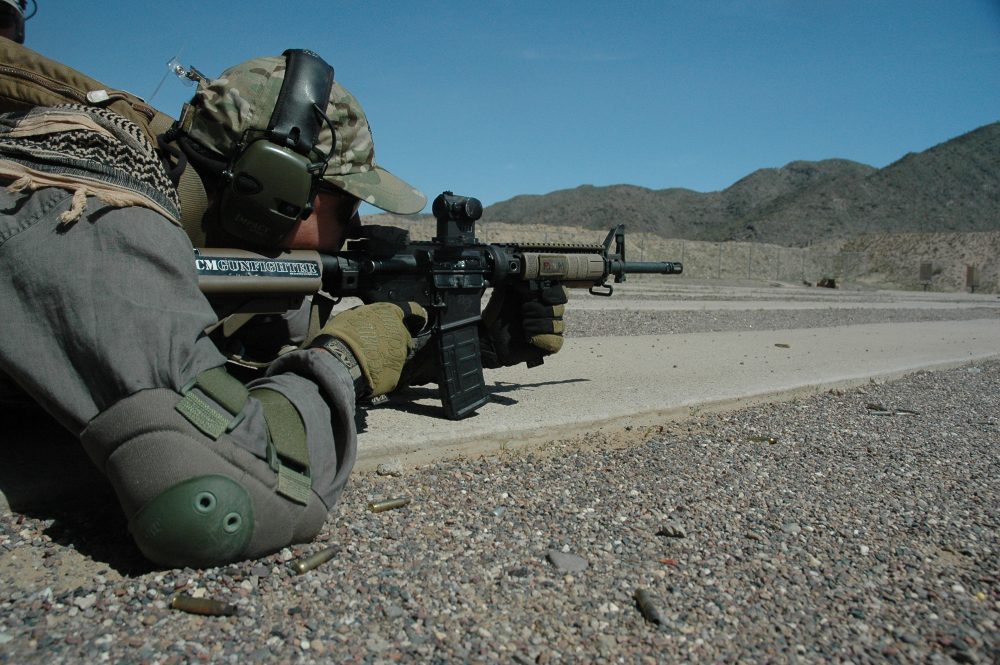
Additionally, not all ARs are the same. Military weapons are held to a standard, and factory Quality Control and outside Quality Assurance mean that problems are minimized.
Aftermarket makers may hold themselves to that same standard or even exceed it. Or they can ignore it and substitute below-standard parts.
The latter means that some parts may not meet the mil specification for a number of reasons. This may mean Magnetic Particle Inspection and pressure testing of the bolt and barrel have not been performed or the type of steel used for the barrel and bolt carrier group (BCG) is not up to spec.
For the average shooter, this may not be an issue. In fact, it may be smart marketing for some makers, as the average AR owner shoots their guns little, if at all.
From my perspective, I don’t aspire to mediocrity. I shoot a lot and stand behind students who are also shooting all day. I prefer to have weapons built to or exceeding the standard, but also understand that not all users have the same needs or requirements.
But neither do I—not for one New York minute—believe that all ARs are the same.
At my company, E.A.G. Tactical, we are fortunate in that manufacturers regularly provide us with guns in order to see how they perform after a reasonable period of evaluation by students at our classes. While we have written about some for S.W.A.T. Magazine (LMT, S&W M&P, LWRCI, and Colt 6940), others have never seen the pages of this magazine.
Caveat. As we are not carrying these guns for real, we spend little time doing any preventive maintenance. We know that a properly maintained AR will function well. Our purpose here is to see how well the guns will function when left dirty but well lubed. I don’t suggest that you try this at home, especially if you are carrying these guns professionally.
While we used to see a wide variety of guns at class, the quality control of some makes is lacking. Apparently students have been reading the after-action reports on Lightfighter.net and Alumni.net, as we have started to see a swing toward those guns built to (or exceeding) the spec. The net result has been fewer busted guns and more time to better conduct training.

Table of Contents
BRAVO COMPANY
Bravo Company USA is a relative newcomer, having entered the market in 2003. Bravo Company MFG was born in 2005 and started producing complete uppers at that time. Bravo Company USA produced a very small number of lowers in 2007, and Bravo Company MFG has been producing lowers since 2008. At this time Bravo Company does not sell complete guns, but several of their dealers do.
Paul Buffoni, the owner of Bravo Company, has built an extremely successful business based on providing quality products with excellent customer service.
We have run a number of Bravo Company guns over the past five years. While most were unremarkable in their boring reliability, one has stood out, both for the longevity of the evaluation period as well as the number of rounds put downrange.

FILTHY 14
As of this writing, EAG students have 31,165 rounds downrange through Filthy 14. During this evaluation period, it was cleaned once (as in one time), at 26,245 rounds. The end result is that Rack #14 was—and remains—filthy. It is filthy because it has been shot at class. Only at class. Every round that has gone down that barrel has been fired at class, with an average of approximately 1,300 rounds every three days. It has been lubed generously with Slip 2000 Enhanced Weapons Lube (EWL).
The combination of carbon and lube create (wait for it)…filth. It is so dirty that, while sitting in the rifle rack, it is almost a biohazard. The filth oozes out and contaminates other carbines adjacent to it.
But it is still shooting—and shooting well.
Rack #14 is a 16-inch Bravo Company Mid Length Carbine—mid length meaning that the gas system is two inches longer than the standard carbine gas system. This permits the use of a nine-inch rail with the standard front sight base. Use of a clamp on the front sight will permit a longer rail to be used.
The longer rail is necessary to accommodate some shooting styles, as well as to provide additional rail estate for the various white lights and IR lasers required to kill bad guys at night.
Subjectively, the mid length system has a softer recoil impulse.
The lower receiver is a Bravo Company USA M4A1, one of very few in circulation. It has a TangoDown BG-16 Pistol Grip. An LMT Sloping Cheekweld Stock (aka the Crane Stock) rides on the milspec receiver extension, as does a TangoDown PR-4 Sling Mount.
The upper is a BCM item, with a milspec 16.1”, 1:7 twist barrel. The barrel steel is chrome moly vanadium (CMV) and certified under milspec Mil-B-11595E.
The BCM bolt is machined from milspec Carpenter 158® gun quality steel, heat-treated per milspec, and then shot peened per Mil-S-13165. Once completed, each bolt is fired with a high-pressure test (HPT) cartridge and then magnetic particle inspected (MPI) in accordance with ASTM E1444.
The handguard is a LaRue 15-9, the nine-inch model to allow full use of the available rail estate.
We have a TangoDown BGV-MK46K Stubby Vertical Foregrip. We use TangoDown BP-4 Rail Panels.
The primary sight is an Aimpoint T1 in a LaRue 660 Mount. The T1 is still on the same set of batteries, and it has never been shut off. The back-up sight is the Magpul MBUS and the sling is the Viking Tactics VTAC.
This is a normal configuration for our guns, although stocks (Magpul CTR, Vltor I-Mod) BUIS (Troy) and day optic (Aimpoint M4s) may be substituted.

IN SERVICE
We received the carbine in late 2008 and put #14 into service shortly thereafter.
At Brady, Texas, in March 2009, it suffered a malfunction, which was reduced with Immediate Action. The bolt was wiped down at 6,450 rounds.
At Prairie du Chien, Wisconsin, in May 2009, it had several failures to extract, and the extractor spring was replaced at 13,010 rounds. This is far beyond the normal extractor spring life under these conditions.
At Wamego, Kansas, in June 2009, two bolt lugs broke at 16,400 rounds. We replaced the BCG. Considering the firing schedule, this is within normal parameters.
At Columbus, Ohio, in November 2009, we had several failures to extract at 24,450 rounds. The shooter gave it a field cleaning and replaced the extractor and extractor spring.
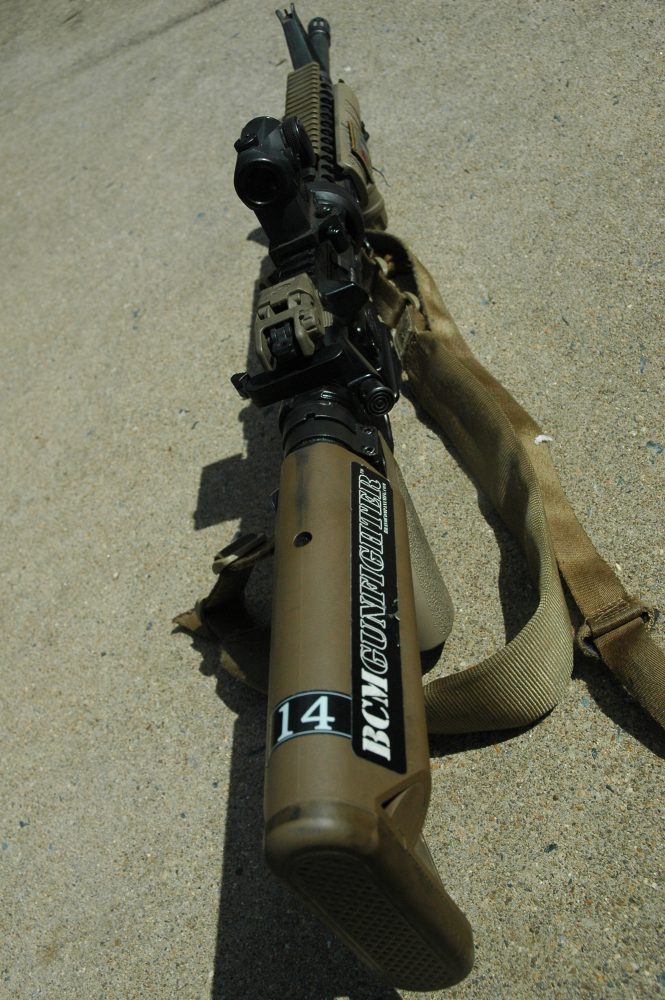
At 28,905 rounds, we finally cleaned Filthy 14. As part of our year-end maintenance schedule, we inspect and replace parts as necessary. Filthy 14 looked like the inside of the crankcase of Uncle Ed’s ’49 Packard. It was disgusting to look at and contaminated everything near it, somewhat like the toner cartridges for old printers.
I plopped it into a parts washer filled with Slip 725 parts cleaner, and 20 minutes later it was clean. Mostly clean, anyway.
We have never used a bore brush in the barrel of this gun. We did run a patch down the barrel twice, but that was all. At 50 yards it still shoots two-inch groups, and we understand that it might not at 100 yards and beyond, but we are happy with the fact that, even at 50 yards, the gun is capable of tighter groups than most of the people running it.
We have never used a chamber brush in this gun either. We were often told that this was an absolute must.
Sure…
At the last class in Casa Grande, Arizona, at approximately 30,000 rounds, we had several failures to extract. We replaced the extractor spring and wiped down the BCG.
By the time you read this, we’ll likely have another 3,000 to 4,000 rounds through Filthy 14. At that point we’ll probably retire it. We’ll reuse the LaRue rail, the sights and, after rebuilding the lower, replace that old and well-worn mid length upper with something else. Fourteen will continue, but just not as Filthy 14.

WHY WE DID IT
What was the point of this 15-month exercise? We know that an AR built to the spec will run more reliably for a longer period of time than a hobby gun. We have run a number of guns to over 15,000 rounds without cleaning—or malfunctions—as long as they were kept well lubricated. And because we have over 20 Bravo Company guns in the armory, we also understand that the quality of one is not an accident.
My background of belonging to a tribe where weapons cleaning approached Jesuit-like fanaticism caused me to once believe that the AR must be spotlessly, white-glove clean in order for it to run.
We know that is patently false, and in fact the overzealous cleaning regimen—clean for three days in a row, use of scrapers on the BCG, attaching chamber and bore brushes to drills, etc.—is harmful to the guns.
We know that not all ARs are the same, and only a fool believes that “parts are parts.”
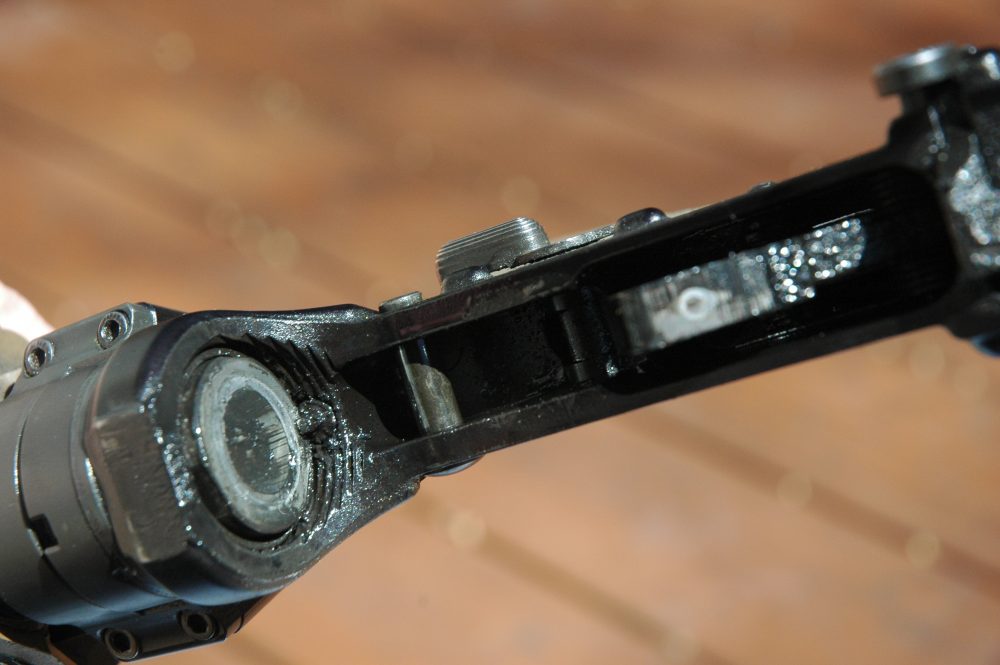
If you want something that is visually similar to what the military uses, buy just about anything and you’ll be satisfied. But if you are going to use it for real, buy something that is made to the spec.
Have realistic expectations. No gun—or car, plane, hibachi, or person—lasts forever. Recently a customer sent an upper back to Bravo Company complaining that the gas tube was bent.
It sure was. It was bent because the owner apparently fired 600 rounds downrange in full auto, causing the gas tube to melt to the barrel. If you want to be stupid, buy a lesser quality gun and save yourself some money.
Again, let me repeat the caveat. If you are carrying a gun for real, you need to be looking at it every 5,000 rounds or so. But if your cleaning takes more than 10 to 15 minutes, you are wasting your time on nonsense.
At a carbine class in Colorado last year, one-third of the carbines used (eight of 24) were Bravo Company guns. The fact that the Pueblo West classes are populated in large part by professionals means that this may be a clue.
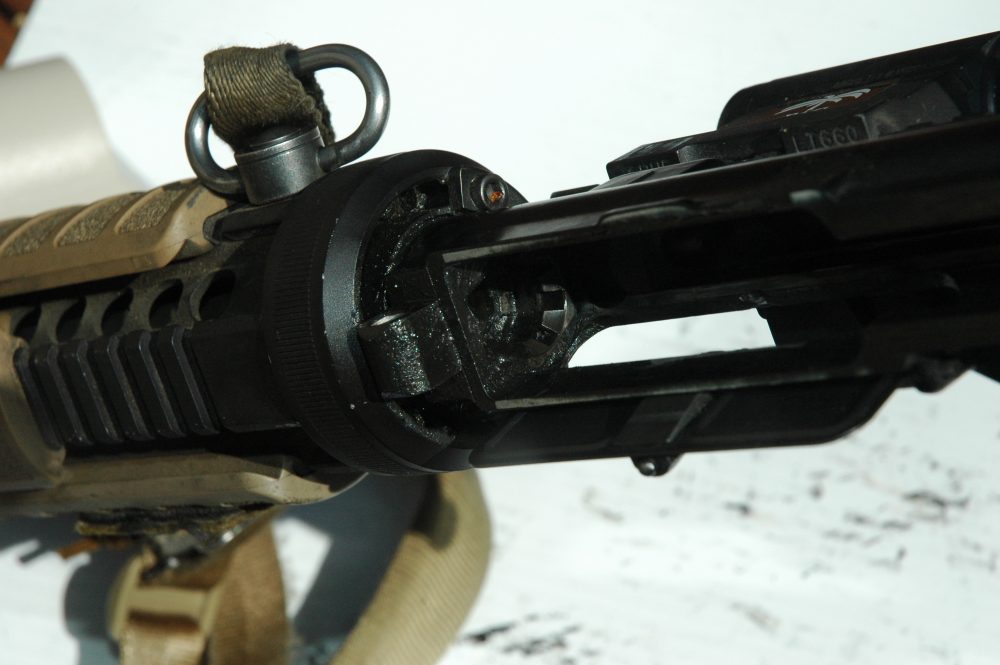
CONCLUSIONS
The fact that Filthy 14 ran so long and well can be attributed to the following:
First is the design of the gun. Cpl. Eugene Stoner knew what he was doing.
Second is the quality of this particular gun from Bravo Company. Paul Buffoni knows what he is doing.
Third is the fact that we used Slip 2000 EWL which, based on past evaluations, keeps guns running long after other lubes have rolled craps. It kept the gun lubricated and made it easier for those rare times when we did clean it. Greg Conner knows what he is doing.
Finally we had a great group of volunteers who took the time to aid us in this evaluation. Bravo Zulu, guys!
[Pat Rogers was a retired Chief Warrant Officer of Marines and a retired NYPD Sergeant. Pat was the owner of E.A.G. Inc., which provides services to governmental organizations and private citizens.]
SOURCES:
Bravo Company Mfg.
Dept. S.W.A.T.
P.O. Box 341
Hartland, WI 53029
(877) 272-8626
www.bravocompanyusa.com
Aimpoint Inc.
Dept. S.W.A.T.
14103 Mariah Court
Chantilly, VA 20151-2113
(877) 246-7646
www.aimpoint.com
LaRue Tactical
Dept. S.W.A.T.
850 County Road 177
Leander, TX 78641
(512) 259-1585
www.laruetactical.com
Magpul Industries Corp.
Dept. S.W.A.T.
400 Young Court
Erie, CO 80516-8440
(877) 462-4785
www.magpul.com
Slip 2000
Dept. S.W.A.T.
4697 Fairway
Rohnert Park, CA 94928
(888) 243-6725
www.slip2000.com
TangoDown
Dept. S.W.A.T.
1588 Arrow Highway, Unit F
La Verne, CA 91750-5334
(520) 888-3376
www.tangodown.com
Viking Tactics, Inc.
Dept. S.W.A.T.
3725 Heatherbrooke Drive
Fayetteville, NC 28306
(910) 987-5983
www.vikingtactics.com

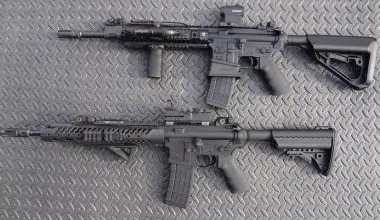
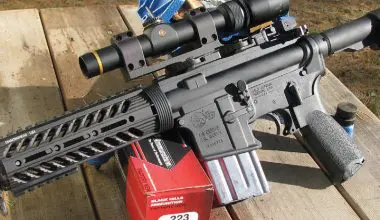

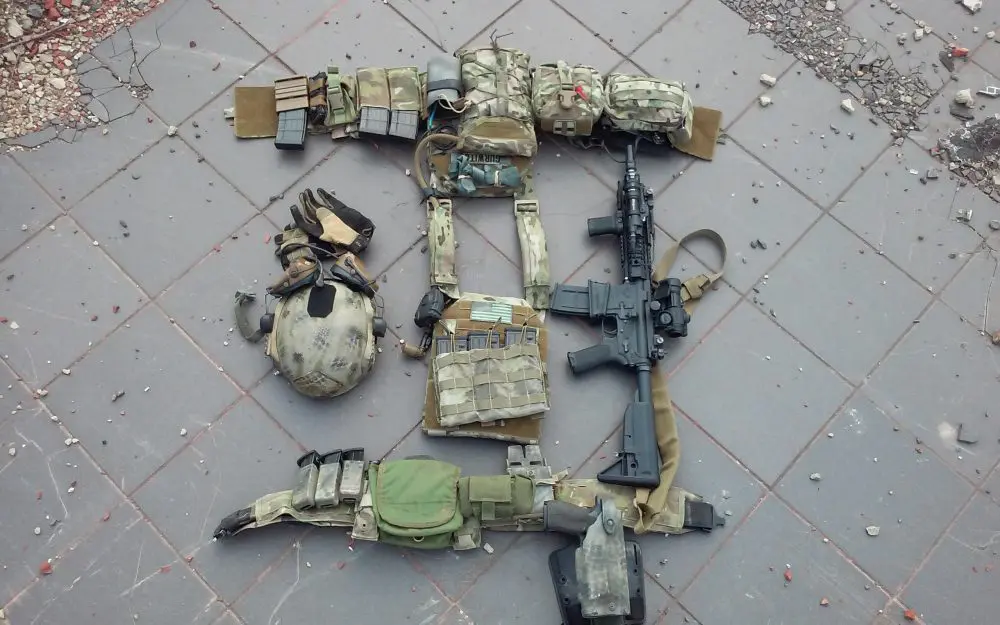
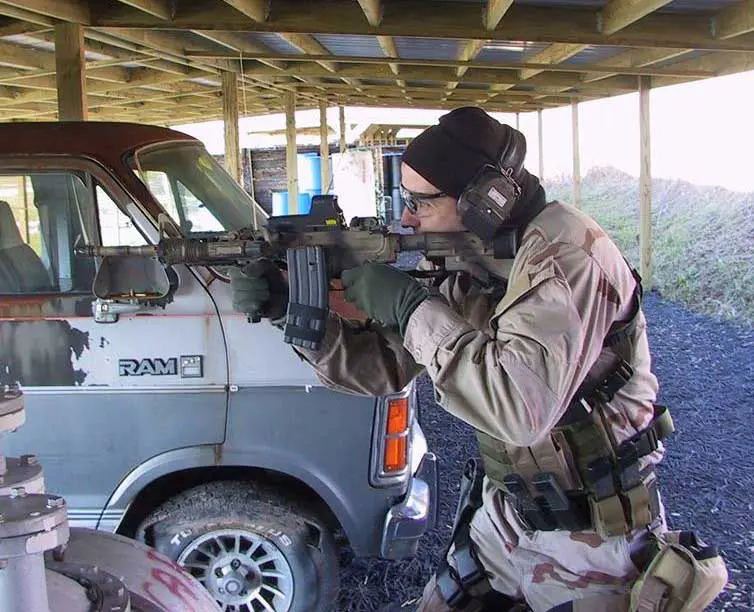
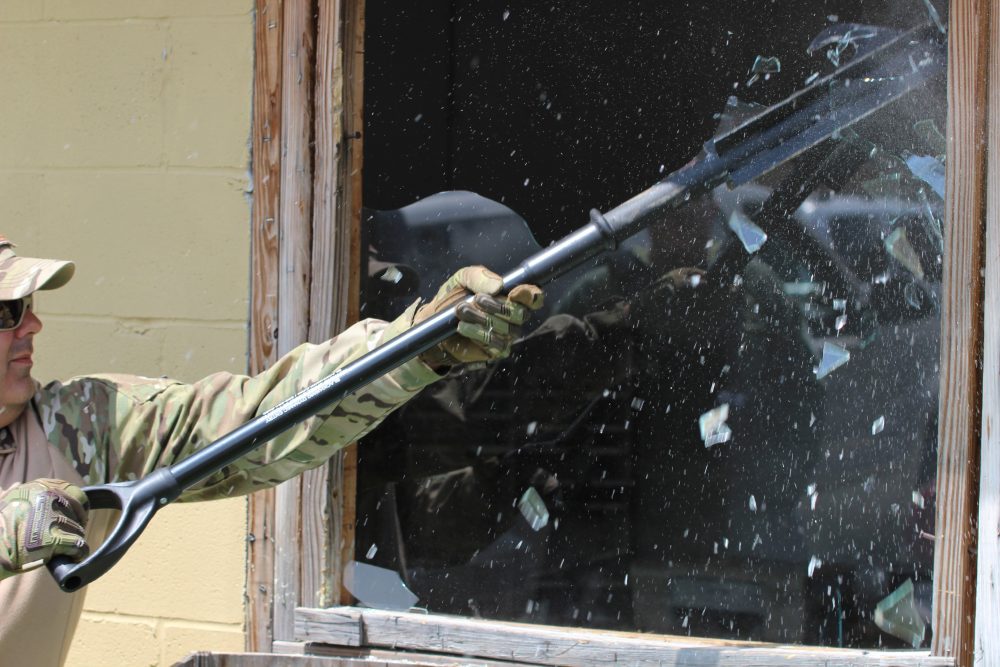
1 comment